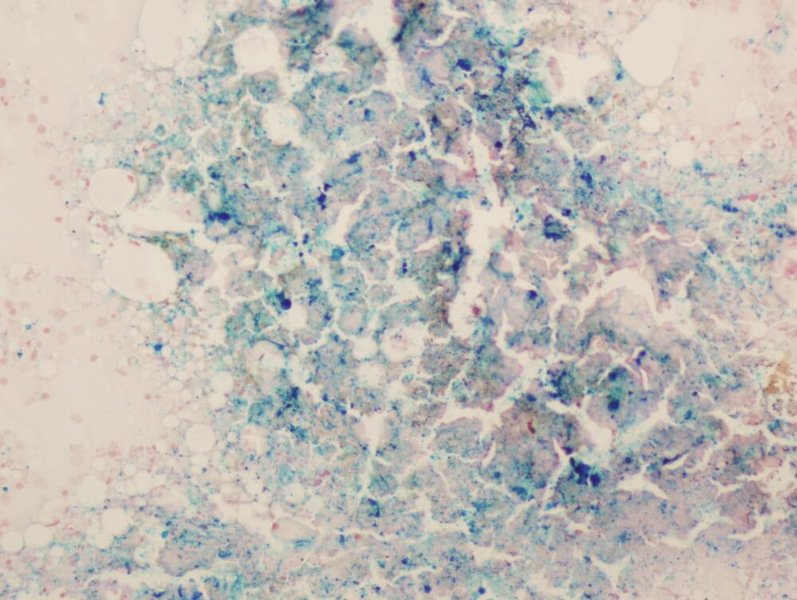
Hemochromatosis Treatment in Denver, CO
Iron deficiency is common among Americans, but what happens when your body absorbs too much iron? Hemochromatosis is a potentially dangerous condition that affects people across the United States. If you suspect you have this condition, Rocky Mountain Gastroenterology is here to help. We work with patients all over Denver, CO and offer strategies for managing their hemochromatosis. Our team can educate you on diagnostic strategies, treatment methods, and hemochromatosis procedures.
What Is Hemochromatosis?
Hemochromatosis is a medical condition caused by an overabundance of iron in the body. In turn, the body absorbs too much iron from food and stores it in the organs. This excess of iron in the liver, heart, and pancreas can lead to life-threatening conditions such as heart problems, liver disease, cancer, and diabetes. A genetic disorder, it primarily affects individuals of Northern European descent.
Recognize Common Hemochromatosis Symptoms
Hemochromatosis symptoms vary greatly from person to person and may not even present until middle age. Early signs include fatigue, joint pain, and abdominal pain. As the disorder progresses, more serious symptoms can develop, including liver disease, darkening of the skin, diabetes, irregular heartbeat, and more severe heart problems. Some patients report what is known as an “iron fist,” which involves pain in the knuckles between the pointer and middle fingers.
Understanding the Hemochromatosis Causes
Hemochromatosis comes in two different varieties, each stemming from different causes. Some cases can be attributed to genetic factors, while others result from an underlying medical condition. Here’s what you need to know about the two main hemochromatosis causes:
- Genetics: Primary hemochromatosis is caused by an inherited genetic change and is the most common variety of the condition. Abnormalities in the DNA cause too much iron to be absorbed into the body.
- Medical Conditions: In some circumstances, medical conditions or procedures can trigger secondary hemochromatosis. Patients with anemia or liver disease may be at increased risk of the condition. If you’ve had a blood transfusion, undergone kidney dialysis, or taken iron pills, you may also have a higher chance of developing hemochromatosis.
How We Diagnose Hemochromatosis
Hemochromatosis is diagnosed through a combination of medical history, physical examination, and, more definitively, blood tests. Early diagnosis is critical to prevent serious complications like liver disease and heart disease, so consult with us promptly if you notice any symptoms. Here are some measures we may take to confirm a hemochromatosis diagnosis:
- Blood Tests: We use two types of blood tests to measure iron overload—serum transferrin saturation and serum ferritin. The former measures iron bound to a specific protein, and the latter looks at the amount of iron in the liver.
- DNA Testing: By testing patients’ DNA, we can pinpoint changes in the HFE gene that indicate high levels of iron in the blood.
- MRI: MRIs provide a noninvasive method of measuring iron overload in the liver.
- Liver Function Tests: This diagnostic test reveals liver damage.
- Liver Biopsy: If exam results are ambiguous or the genetic tests are negative and symptoms persist, a liver biopsy might be carried out. The biopsy will provide a sample of liver tissue, which can be analyzed for iron content and potential liver damage.
Exploring Procedures and Treatment Methods
Hemochromatosis treatment may look a little different for everyone. But at the end of the day, treatments aim to reduce iron levels in the blood and ensure they stay normal. Learn more about some common treatments for this condition:
- Blood Removal/Phlebotomy: This is the primary treatment for hemochromatosis and involves regularly removing blood from the body to decrease iron levels. In the initial phase of treatment, a pint of blood may be removed once or twice a week. Once iron levels are normal, blood may be removed every few months.
- Iron Chelation Therapy: Blood removal is not recommended for patients with anemia and heart complications. For these patients, we may suggest iron chelation therapy. This treatment involves taking a pill or receiving an injection that binds excess iron and allows it to be flushed out.
- Dietary Adjustments: It’s helpful for patients to examine their diet and wellness routine. People with hemochromatosis are usually advised to avoid iron supplements and iron-rich foods like raw fish and shellfish. They should also limit vitamin C intake, which increases iron absorption, and alcohol, which can damage the liver.
Consult With a Specialist Today
Dealing with a condition like hemochromatosis can be scary, but you don’t have to go it alone. At Rocky Mountain Gastroenterology, we’re glad to help patients find relief from their symptoms and increase their quality of life. Our providers offer the gold standard in care and explore every treatment avenue to get the best results possible. Contact us today to set up your first appointment.
Go back